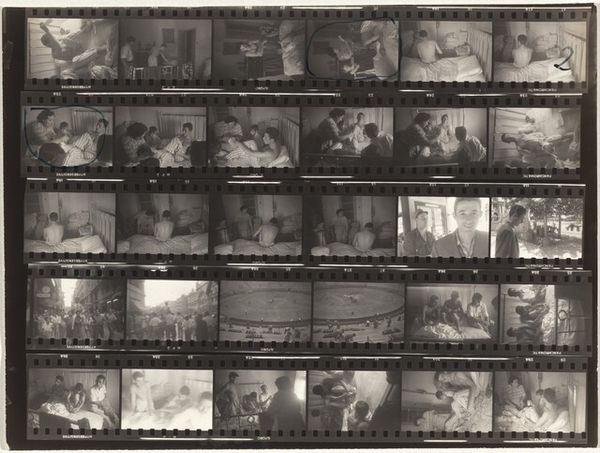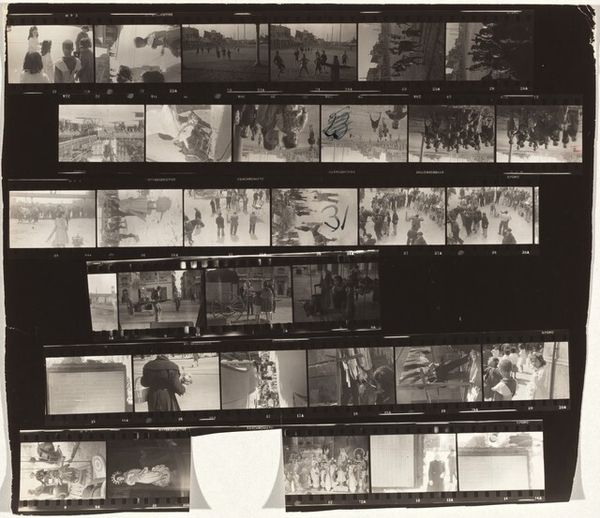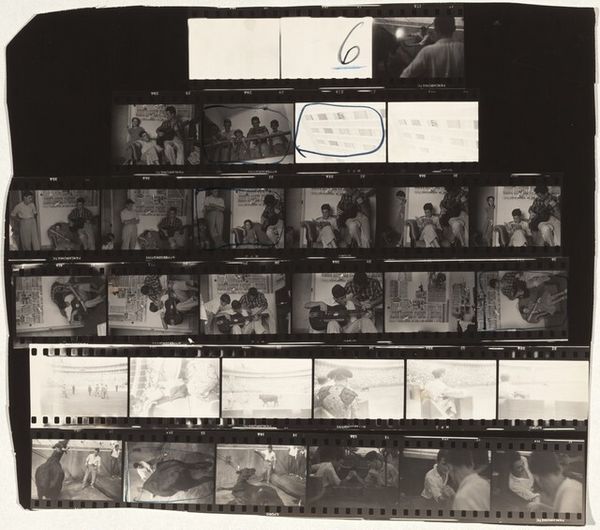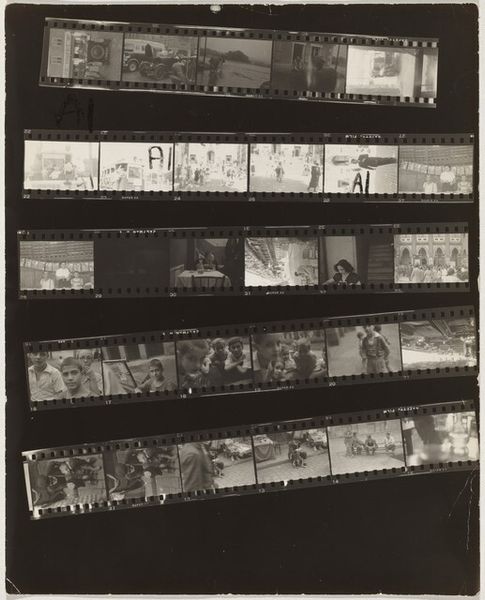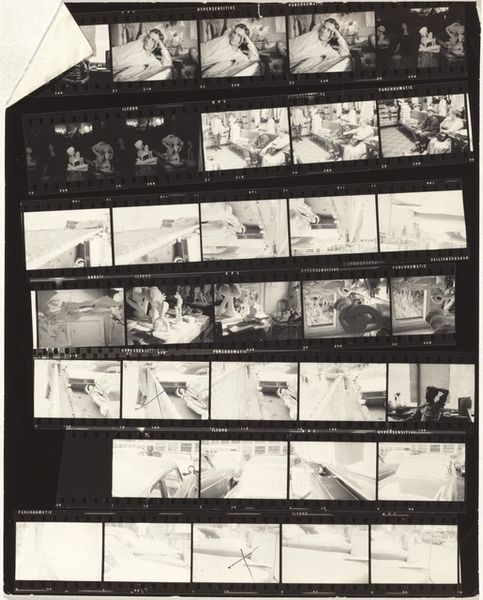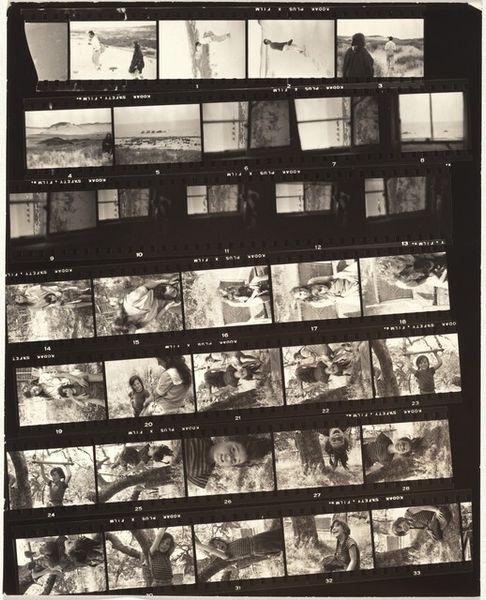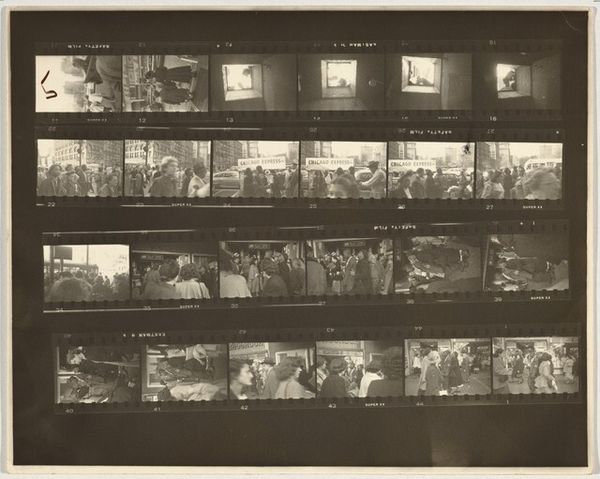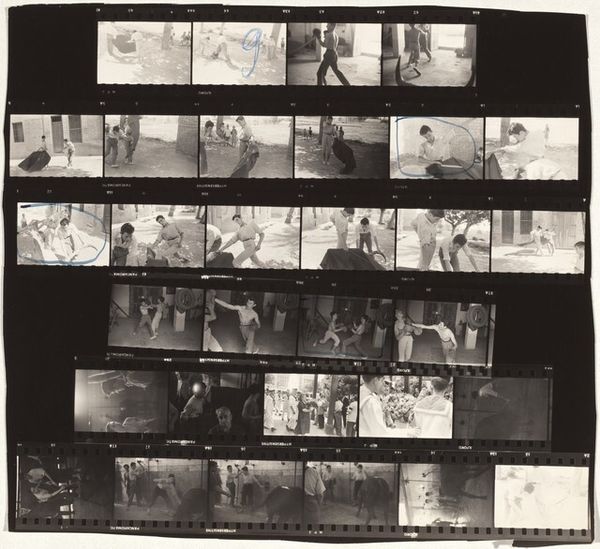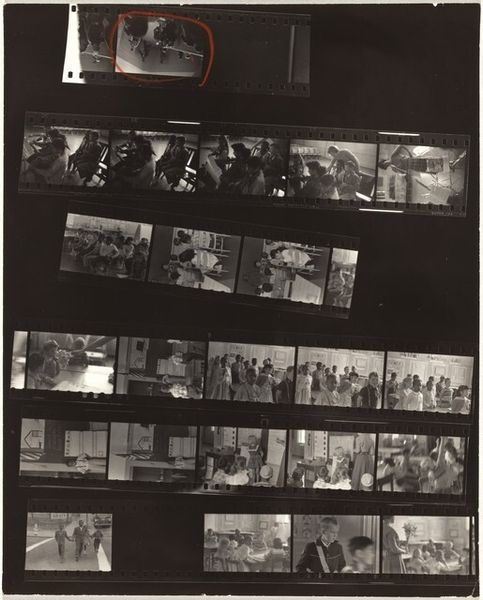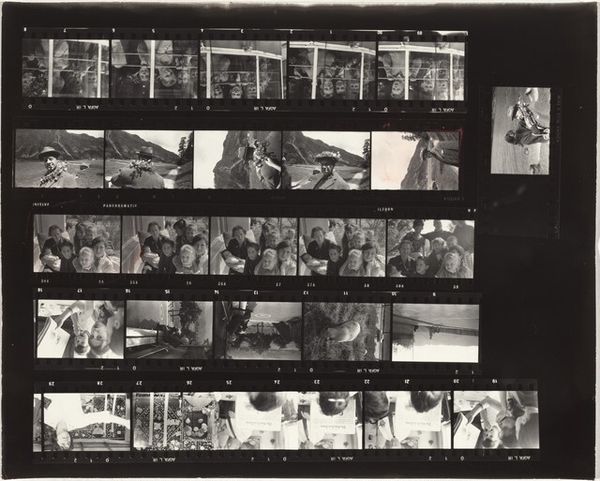
Dimensions: overall: 21.8 x 23.8 cm (8 9/16 x 9 3/8 in.)
Copyright: National Gallery of Art: CC0 1.0
Curator: This gelatin-silver print, "Bullfight--Spain 4" by Robert Frank, was produced in 1952 and offers an intriguing look at a specific place and time. What's your immediate response to this piece? Editor: At first glance, I see a contact sheet with multiple exposures—each little scene feels like a vignette. I am drawn to the textures; it seems stark but vibrant, perhaps highlighting a sense of everyday life. Curator: Precisely. Robert Frank was keen on documenting contemporary society. This sheet captures different aspects of what appears to be everyday life in Spain, centered perhaps around the cultural significance of bullfighting, or life adjacent to the ritual itself. The photographic medium itself feels like a tool for documentation, highlighting process. Editor: Looking closer, it makes me consider how images like these were disseminated, and who had access to them? Did these scenes reflect Spanish identity on a global stage, and how was this interpreted? It begs questions about image distribution, social visibility, and what such imagery tells viewers about their neighbors. Curator: It definitely opens a can of worms regarding who has the power to represent others and how. His approach, even from the point of view of post-impressionist realism, has its roots in photographic tradition. His methodology includes experimenting with framing, capturing decisive moments, but then here with this method, even embracing what some might see as flaws. How do you think that approach challenges viewers of photographic tradition? Editor: Considering the materials themselves and how Frank put forth these scenes as if showing the making itself is fascinating. To your point, by laying the photos bare like this, by demonstrating the development of his concept as a tangible process, viewers get an insight not into the final polished product, but a sort of underbelly. The way the production is put forth so candidly allows for us to examine our preconceived notions and assumptions about labor, authenticity, the medium itself. Curator: Indeed. Robert Frank invites us to consider not just what we are seeing, but how these photographs came to be and how they circulate in defining or perhaps skewing popular consciousness. The value here isn't necessarily inherent to the singular artistic genius, but it involves understanding and questioning the processes of producing images as consumer goods that portray daily existence. Editor: This print feels more relevant when it acknowledges how photographs like these form, shift, and reflect social dynamics. Curator: A really important point of discussion about it. I'm leaving here with more than one question, thanks. Editor: Likewise, understanding how this one contact sheet engages, implicates, and alters social interpretation is a compelling departure point.
Comments
No comments
Be the first to comment and join the conversation on the ultimate creative platform.
